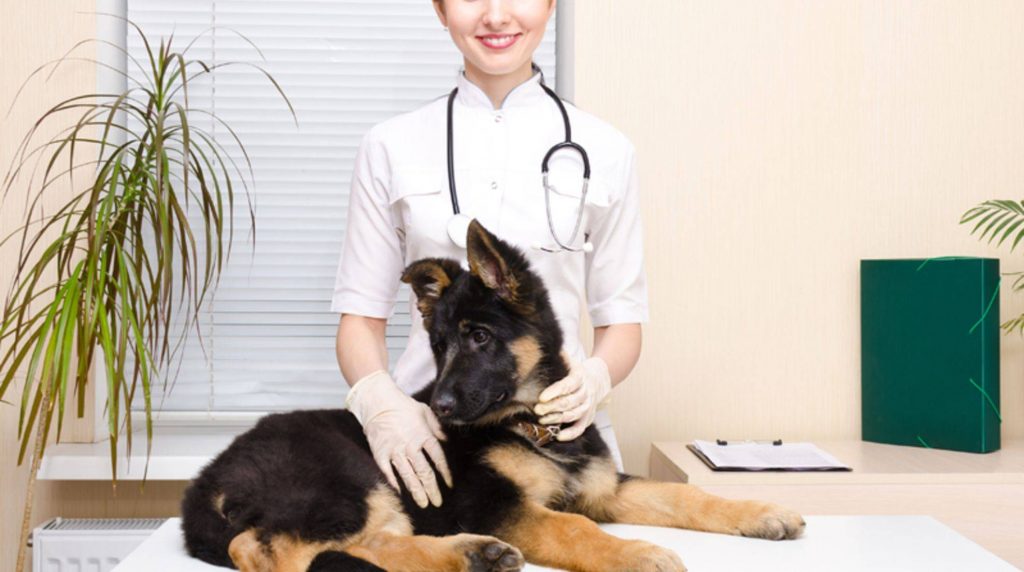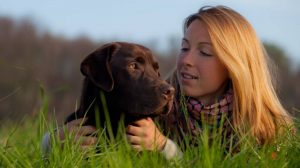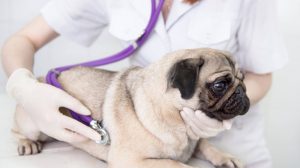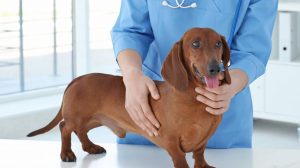Pain in the joints, inflammation and lameness are just a few of the symptoms of canine OCD – a bone growth disorder that can cause severe damage to four-legged friends.

. Here you can find out how you can influence the course of the disease in osteochondrosis dissecans and what types of therapy are available.
OCD in dogs can have several causes; the first symptoms of the degenerative disorder in cartilage formation can already be seen in puppyhood when the skeleton proliferates and has to withstand heavy loads. A can use different treatment methods to treat joint damage.
What is osteochondrosis dissecans disease?
When a dog suffers from OCD, the larger joints are usually affected, such as the elbow, shoulder, ankle or knee joints. The cause of this disease lies in disturbing bone growth in precisely these areas. A puppy’s skeleton is not made entirely of bone but relatively soft cartilage that ossifies over time. This strengthens the structure and enables optimal oxygen supply.
Unlike bone, cartilage is not supplied with blood and must be provided by the surrounding tissue. OCD prevents the cartilage from ossifying during growth. The skeleton remains soft, and the constantly growing cartilage can no longer be optimally supplied. The undersupplied parts can die off. The healthy tissue often rejects the dead, resulting in pieces of the articular cartilage splintering and swimming in the joint as so-called “joint mice”. This leads to painful inflammation.
Significant symptoms and the diagnosis
Your dog can show the first symptoms of OCD at the age of 4 to 7 months. However, the diagnosis is usually only made between the 6th and 8th months. One of the most important symptoms is the sudden lameness of your four-legged friend. If his gait is unclean or he has little desire to move and possibly even obvious pain when walking, he avoids some movements completely, and his joints are swollen. These can be indications of a possible OCD disease. However, only the veterinarian can make an exact diagnosis using imaging methods such as an X-ray examination or magnetic resonance imaging (MRI). Alternatively, a diagnosis can also be made via arthroscopy (joint reflection).
Causes and prevention of OCD in dogs
On the one hand, hereditary factors cause OCD in dogs; on the other hand, dog owners can partly influence the development of joint damage through their behaviour. To prevent OCD, you must pay attention to the proper diet for your four-legged friend. If you give too much high-energy food, your puppy will grow too quickly and become too heavy for the developing skeleton. This puts too much stress on the joints. Too much calcium, phosphorus and vitamin D are also not healthy. There is an increased calcitonin content in the blood, which hurts the cartilage cells’ maturation.
To prevent your dog from showing symptoms of OCD in the first place, you should pay more attention to his playing behaviour. Young dogs, in particular, tend to run around a lot. This can cause tears or fractures in the cartilage tissue. Joints have to cope with enormous forces during normal movement. If the joints are additionally overloaded, for example, through long, wild games with abrupt direction changes and rapid acceleration, these forces and their effect are multiplied accordingly. Therefore, in the growth phase, which lasts up to 12 months, it is advisable not to overwhelm your dog.
Which breeds are particularly susceptible?
Experience has shown that large dog breeds, in particular, are often affected by OCD and its symptoms. These include, above all:
• German Mastiff
• German shepherd dog
• Belgian Shepherd Dog
• Newfoundland
• Rottweilers
• German boxer
• Labrador retrievers
• Golden retriever
Although not as common, small dogs can also develop OCD.
This is how OCD can be treated.
There are two ways to treat OCD in dogs, conservative and surgical treatment. Before the vet decides on a suitable method, he must know the general condition, the age and the extent of the cartilage or joint damage. If the symptoms are not yet so severe, conservative therapy is recommended. An attempt is made to completely immobilize the affected joint for at least three months to heal the existing cracks. In addition, there is a strict diet to avoid an oversupply of minerals and energy.
Painkillers improve your dog’s quality of life but often stand in the way of immobilization because he would like to move without pain. In addition, the treating physician usually prescribes anti-inflammatory medication and defines physiotherapy or canine physiotherapy. This loosens the often cramped muscle tissue around the diseased joint.
Surgical therapy is used for severe symptoms. The doctor opens the joint capsule to remove small broken cartilage pieces and mechanically smooth cracks in the cartilage. After the procedure, the dog must also be kept as still as possible. He is only allowed to move to a reduced extent for about three months. A slow muscle build-up follows this through targeted movement. However, any treatment is no guarantee that OCD will not come back or affect another joint.










